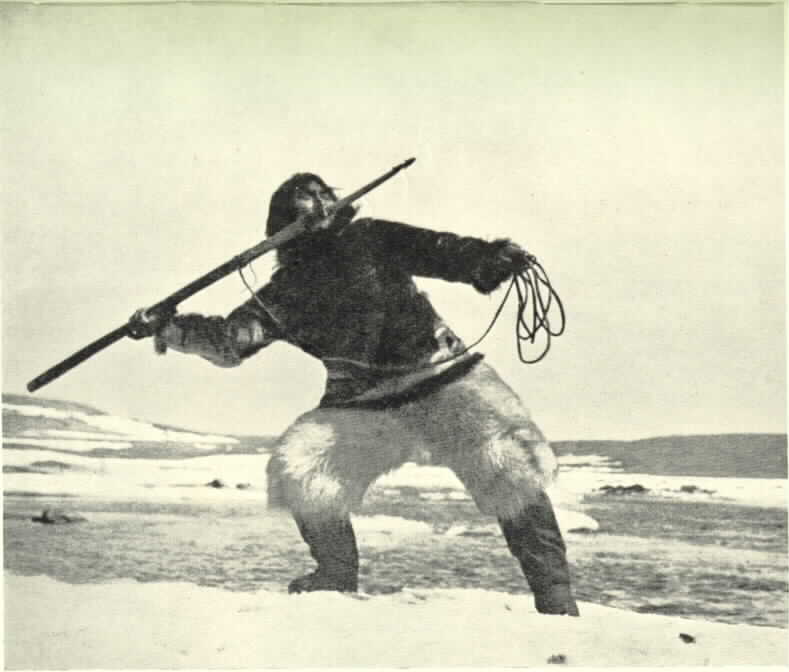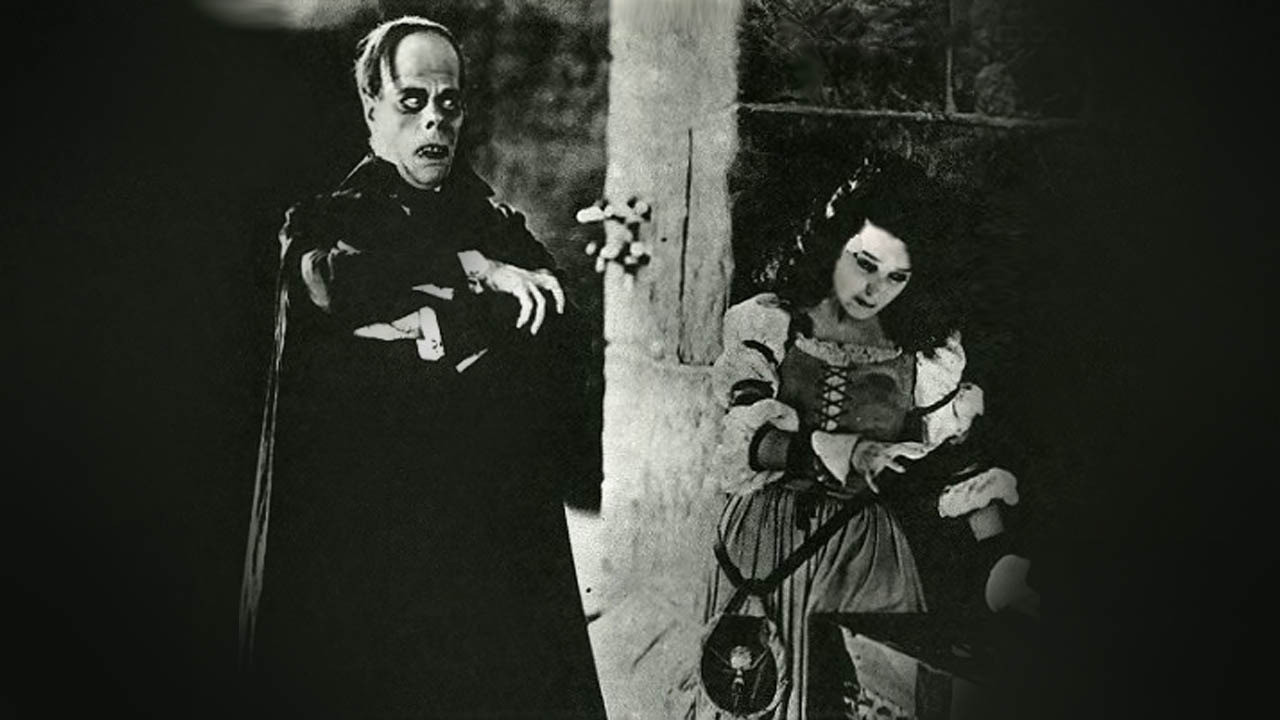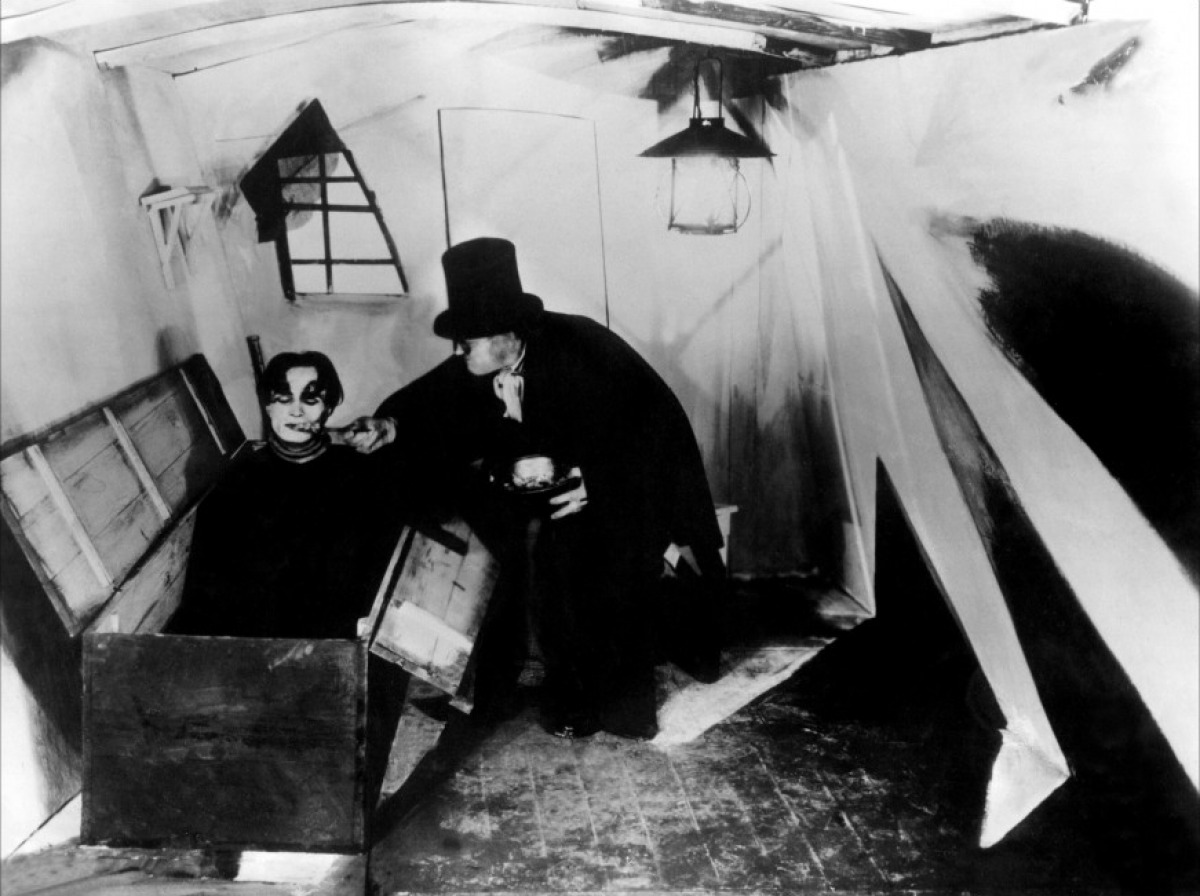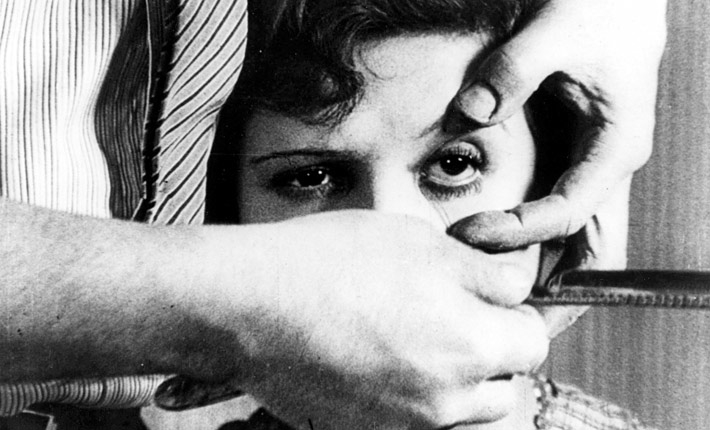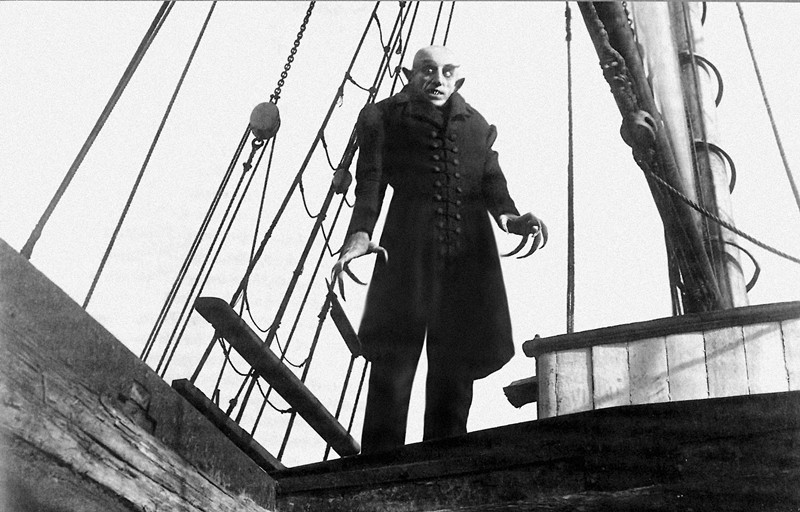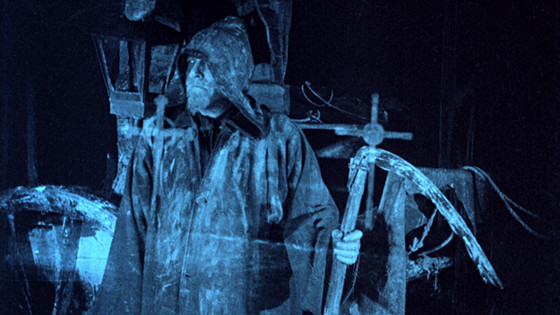14. Nanook of the North (1922, Robert J. Flaherty)
Nanook tells the story of Nanook and his Inuit family living and surviving in the Arctic Circle. The film is mostly significant for being the first full-length, journalistic documentary in film history.
There were other short documentaries and nonfiction films that came before it; for example, Thomas Edison made Electrocuting an Elephant (and yes, they really did and filmed that). There were also some experimental documentary-style films in the silent period, an important one to be discussed later in this list.
But as far as the modern-day documentary is concerned, in which a filmmaker sets out to tell a unique and fascination story of someone’s real life via interviews and the relatively un-cinematic “cinema vérité” recording of their lives, Nanook was the first.
13. The Phantom of the Opera (1925, Rupert Julian)
After making silent viewers uncomfortable in The Hunchback of Notre Dame, Lon Chaney went all-out in his techniques to scare the audience in Phantom of the Opera. Author and critic David Skal, in the Bravo network’s 100 Scariest Movie Moments, relates how Chaney used piano wire and other appliances to transform his face into basically a skull. Perhaps Chaney should be considered film’s first method actor.
Chaney also really utilized the qualities of silent cinema, acting not even through his face but the various masks he had made, each expressing a different emotion. Skal later relates how “the unmasking scene was one of the big shock moments of the silent cinema.”
It paved the way for other great jump-scares, like those at the end of Carrie and Friday the 13th, and paved the way for the horror genre in general. The classic Universal films featuring Bela Lugosi, Boris Karloff, and Chaney’s son Lon Jr., and many of the American horror films to follow, wouldn’t be possible without the work of Chaney Sr. in Phantom of the Opera.
12. Sunrise: A Song of Two Humans (1927, F.W. Murnau)
Sunrise tells the story of an unfaithful farmer and his fling from the city who seek to drown the farmer’s wife. Murnau’s first Hollywood film is a thoroughly heartwarming film that is important for several reasons, including the fact that it featured sound-effects (but no spoken dialogue, so it’s still considered ‘silent’), and a technique called “double exposure” in which two images are overlaid in the same frame.
These techniques earned the film the inaugural Oscar for cinematography, and the only Oscar ever presented for “Best Unique and Artistic Production.”
The film is also significant for it being one of the first major feature films in which romance alone carries the film. The majority of silent films had romances in them, but as side plots. In Sunrise, the entire plot revolves around a love triangle, so the love felt by the characters in primary. It is still one of the greatest romance movies ever made.
11. The Cabinet of Dr. Caligari (1920, Robert Wiene)
You’ve probably heard of the period of painting or film called “Expressionism.” Maybe you’ve specifically heard of “German Expressionism.” What art critics are referring to is this film.
Its harsh lighting, abstract set design, and outright scary performances and make-up are what classify this film as expressionist. Wiene brought the expressionist tradition from the canvas—paintings like Van Gogh’s Starry Night and Edvard Munch’s The Scream—to the silver screen, in a unique continuation of an artistic tradition from one medium to another.
German Expressionism later evolved to film noir when many German directors, such as Murnau, Lang, and Wilder, immigrated to Hollywood. Film noir was continued by the French New Wave directors, and many directors still use the style, sometimes adding variations and calling the style post-noir or neo-noir, today. Caligari is also often considered if not the first horror film, then certainly one of the first.
10. Un Chien Andalou (1929, Luis Buñuel and Salvador Dali)
Inexplicable jumps forward and backward in time. Characters seamlessly moving from one location to another. Ants crawling out of a hole in a man’s hand. An eyeball being split in half (trivia: it was a dead calf’s eye). These strange images and sequences compose the surrealist classic Un Chien Andalou.
With these wild imagery and time jumps, the point of the film is clearly not its story. The point of a surrealist film is to evoke emotion through imagery alone. The dead horse on the piano evokes one emotion, the drooling groper another.
The emotional ride of the film comes not from the ups and downs of characters, but those of types of imagery. This type of storytelling in film was set forth by Buñuel and Dali here, and later expanded upon by David Lynch, Alejandro Jodorowsky, and of course Buñuel himself.
9. Nosferatu (1922, FW Murnau)
Murnau’s third film in the list is arguably his greatest. The film is notable because of the legal battle that ensued between Murnau and Bram Stoker’s estate over the rights to Stoker’s novel Dracula, but beyond that the quality of the film is really what holds it aloft.
Critic Maitland McDonagh said of Murnau in making Nosferatu, “He was always experimenting, was always looking at ways to use light, to use setting.” Shooting the vampire in clear, yellow light, rather than the shadows of the earlier expressionist films, was an innovation meant to showcase the horrific make-up, and the creepy performance of Max Schreck.
Seen from the three films in this list, as well as all his others, Murnau was one of the greatest directors of the silent cinema. His use of different light filters to create emotion, his use of setting (castles and mountains in Nosferatu, the city in Sunrise), the costumes he employed (Schreck’s in Nosferatu, Jannings’s in his adaptation of Faust), and many other features of his genius that other directors simply weren’t doing at the time, sets him apart as one of the greats of the silent cinema.
8. The Phantom Carriage (1921, Victor Sjöström)
The Phantom Carriage tells the tale of three drunkards on New Year’s Eve. One of them, David, passes away, and as the last to die before the new year is cursed to ride Death’s carriage for the next year.
The current driver, Georges, is an old friend of David’s, and he takes David on a tour of his past drunken mistakes, and David laments his alcoholic ways and asks for repentance. Aside from being an historically innovative film, it is just a beautiful film, sure to bring near every viewer to tears.
Its beauty comes through some of its innovative techniques. It’s one of the first films to explore the use of flashbacks, and to great effect, as David sees the consequences of his past actions.
The earlier-mentioned technique of double exposure was really first utilized here, to show the ghostly nature of the carriage, and the escaping of David’s soul. The strong blue light filters that accompany many of these scenes make the ghostly double exposure all the more haunting.
Sjöström directed, adapted the screenplay, and starred in the film, a unique triple that really only Charlie Chaplin was doing in the silent era. Swedish legendary filmmaker Ingmar Bergman so loved the film, that it is reported that he watched it at least once a year. It clearly influenced works of his like The Seventh Seal, and Bergman even worked with Sjöström on many of his films, like Wild Strawberries.
